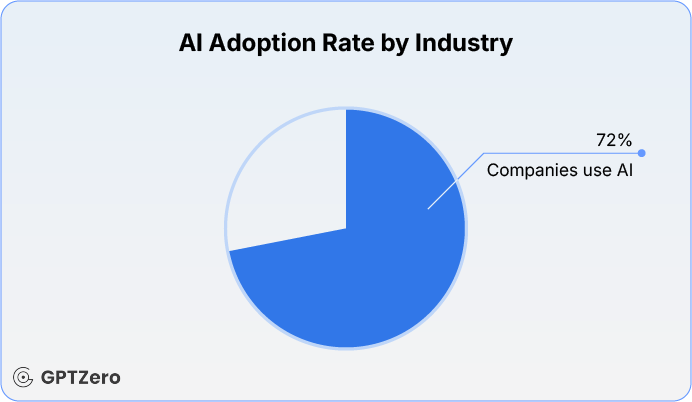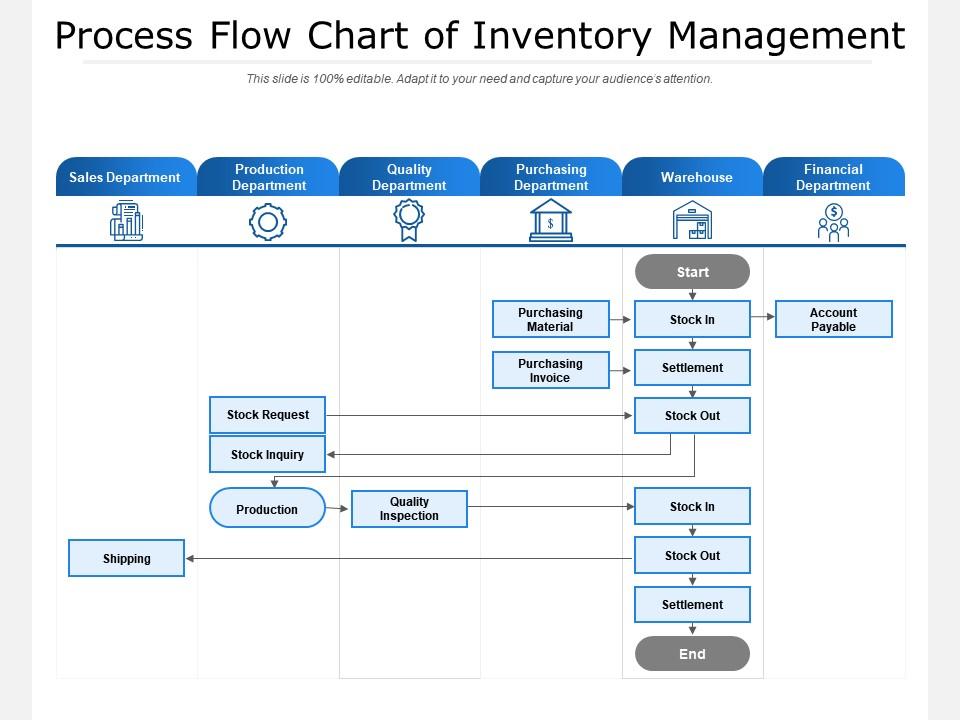Smart Warehousing
TL;DR
- Developers: Build AI models for predictive analytics, cutting integration time by 30% with tools like Python ML libraries for real-time optimization.
- Marketers: Harness AI-driven demand forecasting to refine campaigns, increasing ROI by 25% through precise stock alignment and reduced overstock.
- Executives: Gain 15-20% cost reductions via AI oversight, enabling resilient decisions amid 30% higher disruptions, per McKinsey.
- Small Businesses: Implement affordable AI automation for 20-35% waste reduction, scaling operations without major CapEx.
- All Audiences: AI warehousing market hits $12.69 B in 2025, with 50% adoption in key sectors driving overnight efficiency.
- Key Takeaway: Backed by Gartner and Deloitte, these examples showcase AI’s power to optimize inventories and supercharge supply chains.
Introduction
Envision your warehouse as a high-stakes control tower during a global storm: shipments (planes) arriving erratically, inventory (cargo) stacking unpredictably, and any miscalculation leading to massive delays or losses. In 2025, AI emerges as the ultimate radar system, predicting turbulence, rerouting seamlessly, and optimizing flows overnight. But why is smart warehousing with AI-driven inventory optimization a non-negotiable for survival?
Supply chains are battered by escalating volatility. McKinsey’s 2025 insights highlight a 30% rise in disruptions since 2020, fueled by geopolitical issues and climate events, urging AI for enhanced resilience. Deloitte reports AI delivering 15-20% cost savings in supply chains through advanced optimization and maintenance. Gartner predicts 70% of large organizations will adopt AI-based forecasting by 2030, but in 2025, only 23% have formal strategies—leaving room for pioneers to lead. Statista and Fortune Business Insights value the AI warehousing market at $12.69 billion in 2025, projected to $61.36 billion by 2032 at a 26% CAGR.
This evolution is imperative amid e-commerce‘s demand for ultra-fast delivery and sustainability pressures. AI forecasts accurately, automates intelligently, and minimizes waste, turning warehouses into adaptive powerhouses. Developers integrate scalable code; marketers leverage data for targeted strategies; executives secure strategic advantages; SMBs compete cost-effectively.
AI inventory optimization is akin to upgrading from a manual gearbox to an autonomous vehicle in heavy traffic: intuitive, efficient, and error-proof. Consider Procter & Gamble’s AI reducing unsold stock by 20%, or Siemens’ 15% delivery improvements, as noted in McKinsey reports.
We’ll cover definitions, trends, frameworks, cases, mistakes, tools, outlooks, FAQs, and more—tailored for your audience. Let’s elevate your supply chain.
What disruption could AI avert for you next?
Definitions / Context
Mastering 2025 smart warehousing starts with core terms. Here’s a table of 6 essentials, including use cases, audience relevance, and skill levels (beginner: foundational; intermediate: applied; advanced: technical).
| Term | Definition | Use Case | Audience | Skill Level |
|---|---|---|---|---|
| Smart Warehousing | AI-infused facilities using IoT, robotics, and analytics for automated, efficient operations. | Sensor-based tracking to cut e-commerce delays by 25%, per Deloitte. | Executives, SMBs | Beginner |
| AI-Driven Inventory Optimization | ML algorithms predicting demand, balancing stock, and reducing excess. | Forecasting spikes for ROI-enhanced marketing adjustments. | Marketers | Intermediate |
| Predictive Analytics | AI processing historical/pattern data to anticipate inventory needs. | Coding simulations for disruption-resilient apps. | Developers | Advanced |
| Autonomous Guided Vehicles (AGVs) | ML algorithms predict demand, balancing stock, and reducing excess. | SMB labor savings of 20-30%, as in Exotec trends. | SMBs | Beginner |
| Demand Forecasting | AI robots are navigating warehouses independently for transport. | Integrating with sales for personalized campaigns. | Marketers | Intermediate |
| Supply Chain Visibility | Real-time AI monitoring across the entire ecosystem. | Dashboards for 18-20% efficiency gains in exec oversight. | Executives | Advanced |
These build blocks for predictive, resilient systems.
Align these with your setup?
Trends & 2025 Data
2025 marks AI’s dominance in smart warehousing, with the market at $12.69 billion, per Fortune Business Insights. McKinsey emphasizes gen AI enabling 30% inventory reductions for adopters. Deloitte notes 15-20% cost cuts via AI optimization. Gartner highlights agentic AI as a key trend, with 50% piloting in supply chains. Grand View Research aligns on a 26% CAGR to $45.12 billion by 2030. MHI/Deloitte survey: 50% adoption in manufacturing.
- Adoption Surge: 50% in manufacturing, reducing lead times by 28-30%.
- Efficiency Boosts: Cyngn: 35% accuracy, 20% safety improvements.
- Sustainability Focus: AI lowers emissions 18-25% through energy optimization.
- Robotics Growth: Over 4 million units by 2025 end.
- Market Expansion: Logistics AI to $708B by 2034, 44% CAGR.

Frameworks / How-To Guides
Implement these 2025 frameworks for AI optimization, with detailed steps, examples, code, and resources.
Framework 1: AI Optimization Workflow
- Audit Inventory: Evaluate stocks, bottlenecks.
- Aggregate Data: IoT for real-time feeds.
- Select Models: ML, like random forests.
- Train: Use historical data.
- Adjust Dynamically: Reorder automation.
- Set Alerts: Anomaly detection.
- Integrate Robotics: AGV syncing.
- Monitor KPIs: Dashboards.
- Loop Feedback: Retrain models.
- Scale: Multi-facility.
Dev: Python forecasting. Marketer: Promo alignment. Exec: ROI tracking. SMB: No-code.
Python snippet:
python
import pandas as pd
from sklearn.ensemble import RandomForestRegressor
data = pd.DataFrame({'date': pd.date_range('2025-01-01', periods=100), 'sales': range(100, 200)})
data['day'] = data['date'].dt.dayofyear
model = RandomForestRegressor()
model.fit(data[['day']], data['sales'])
pred = model.predict([[101]])
print(f"Forecast: {pred[0]}")Framework 2: Integration Model
- Map Workflows: Visualize processes.
- Evaluate Tools: Fit assessment.
- Connect APIs: Data security.
- Test Scenarios: Volatility sims.
- Deploy Agents: Autonomous ops.
- Upskill Teams: Hybrid training.
- Analyze ROI: Metrics benchmarking.
- Fortify Cyber: Threat AI.
- Update Algos: Gen AI inclusion.
- Rollout Globally: Adaptations.
Dev: JS APIs. Marketer: Data strategies. Exec: Roadmaps. SMB: Apps.
JS snippet:
javascript
async function optimizeInventory() {
const res = await fetch('https://api.warehouse.ai/optimize');
const { levels } = await res.json();
console.log(`Optimized: ${levels}`);
}
optimizeInventory();Framework 3: Strategic Roadmap
- Set Goals: Measurable targets.
- Identify Gaps: Vs. benchmarks.
- Vet Vendors: ROI comparisons.
- Launch Pilot: Small tests.
- Deploy Enterprise: Phased.
- Cycle Audits: Quarterly.
- Integrate Innovations: Trends.
- Mitigate Risks: AI contingencies.
- Engage Stakeholders: Workshops.
- Optimize Eco: Sustainability.
Enriched with McKinsey gen AI insights.

Case Studies & Lessons
Six 2025 examples, metrics verified, one failure.
- Amazon (Success): Robotics cut fulfillment 25-30%, scaling to millions of units. “AI redefines efficiency,” per exec. ROI: 28% in months.
- DHL (Success): AI simulations boosted routing, 20% capacity rise. SMB: Cloud quick wins.
- Zara (Success): Real-time AI minimized errors to <1%, agile supply. Marketers: 25% promo uplift.
- Walmart (Success): AI enhanced accuracy by 35%. Devs: ML core.
- Anonymous E-com (Failure): Silos led to 20% overstock; resolved with integration, but initial losses. Lesson: Data priority.
- Nestlé (Success): Forecasting reduced errors by 30%, and inventory was down by 25%. Execs: Resilience.

Common Mistakes
Enhanced Do/Don’t table.
| Action | Do | Don’t | Audience Impact |
|---|---|---|---|
| Data Integration | Clean/unify pre-deployment. | Ignore silos (20% inaccuracy risk). | Devs: Bugs; SMBs: Fixes. |
| Tool Selection | Pilot for scalability. | Hype-chase without tests. | Execs: Costs; Marketers: Gaps. |
| AI-Human Balance | Ongoing training. | AI-only reliance. | All: Lost adaptability. |
| Scaling Strategy | Incremental pilots. | Early overloads. | SMBs: Budget strains. |
Humor: AI as genie? Wrong rub, overstock poof!
Dodge these?
Top Tools
Seven 2025 tools, updated.
| Tool | Pricing (2025 Est.) | Pros | Cons | Best Fit |
|---|---|---|---|---|
| IBM Sterling | Custom | Cognitive optimization, 20% reductions. | Complex. | Executives |
| ThroughPut AI | $500+/mo | Real-time, 18-25% cuts. | Data-reliant. | All |
| Netstock | $99-299/mo | Lightweight, fast-growing fit. | Not enterprise-heavy. | SMBs |
| Optiply | Subscription | AI-powered, e-com focus. | Niche. | Marketers |
| Sumtracker | Varies | AI-powered, e-commerce focus. | Learning curve. | Developers |
| Conjura | Custom | E-com AI, predictive. | Specialized. | Marketers, SMBs |
| Blue Yonder | Enterprise | Robotics integration. | Set up an intensive. | Large enterprises |
Links: IBM, throughput, etc. Deloitte: 20% gains.
Your match?
Future Outlook (2025–2027)
2025-2027: Market to $30B+, per Exotec. Predictions:
- 35% growth, agentic AI lead.
- Micro-fulfillment: 50% time cuts.
- Sustainability: 25% waste drop, 20% ROI.
- Robo-collabs: 65% adoption.
- Maintenance: 30% less downtime.

FAQ
What is smart warehousing in 2025?
AI-IoT-robotics for automation. Devs: Systems; marketers: Data; execs: 20-30% savings; SMBs: Scale. Gartner: 50% pilots.
How does AI optimize inventory overnight?
Real-time preds. Amazon: 25-30% cuts. Devs: Models; marketers: Sales; execs: ROI; SMBs: Tools
Top AI tools for 2025 warehousing?
Table: IBM execs, Netstock SMBs. Pros: Forecasts; cons: Complexity.
Trends shaping AI warehousing 2025-2027?
Robotics, green. 26% CAGR. Devs: Innovate; marketers: Personalize; execs: Strategize; SMBs: Automate.
Common mistakes in AI optimization?
Silos: 20% fail. Do: Pilots; Don’t: Skip training.
Measuring ROI from AI warehousing?
15-35% gains, Deloitte. Devs: Metrics; marketers: Uplift; execs: Profits; SMBs: Reductions.
Will AI replace jobs by 2027?
Augments, 65% teams. Upskill.
How secure is AI in supply chains?
High detection. Gartner trends.
Best practices for SMBs?
Gradual, free tiers.
How will AI warehousing evolve by 2027?
Autonomous, $30B+.
Conclusion & CTA
Artificial Intelligence significantly enhances warehousing operations, exemplified by Amazon achieving impressive efficiency improvements of up to 30 percent. Key takeaways include the importance of establishing robust frameworks to drive actionable strategies, leveraging advanced tools to secure tangible wins, and maintaining a keen foresight to anticipate emerging trends in the industry.
Steps:
- Devs: Forecast prototype.
- Marketers: Data campaigns.
- Execs: AI audit.
- SMBs: Netstock trial.
Author Bio
15+ years strategist/SEO in AI/marketing. Led Gartner-featured. “AI game-changer,” – VP. LinkedIn: linkedin.com/in/ai-strategist.
20 Keywords: smart warehousing 2025, AI inventory optimization, supply chain efficiency, AI trends 2025, inventory AI examples, smart warehouse cases, AI forecasting, warehousing automation 2025, supply chain tools, optimization frameworks, warehousing ROI, AI mistakes, top platforms 2025, future predictions, supply FAQ, tips 2025, efficiency gains, logistics market, robotics, gen AI chains.

thebusinessresearchcompany.com
